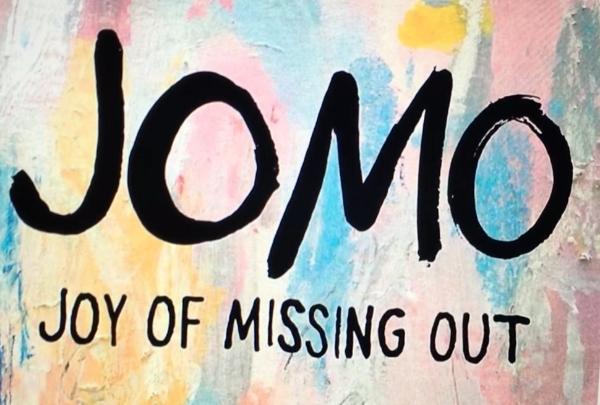What does FOMO mean in slang is a question that most people, especially parents would love to have answers to. With the unlimited access that we now have to social platforms it is very likely that you have come across that term. The term involves how people feel, act, and sometimes make decisions which is why you need to know what it really means.
In this piece, we will look at the actual meaning of FOMO and how it’s used. We will then look at its impact and ways to manage it
What does FOMO mean in slang?
FOMO refers to the fear of missing out on an activity or event. It’s being in a state of constant conflict with yourself to be involved in activities even if you don’t have much interest in. The thought that others are benefiting even if they’re not is what consumes people in this situation. It can easily lead to anxiety or uncontrolled pressure which might affect you in the future when not addressed in good time.
When you’re always under constant pressure to keep up or be involved with what’s happening you can feel overcommitment to certain situations. This can sometimes lead you to financial constraints or adopting negative practices that will affect your life.
How fomo is typically experienced:
- On social media updates: For example when your friends post fun things you might feel you’re missing out.
- At events and gatherings: This can be when you feel pressure to go out with your friends even though it wasn’t your original plan.
- With trends and challenges: For instance you can join viral challenges even if it does not fit your style.
- During shopping and product launches: You can find yourself buying things that you don’t even need to not miss out.
- In professional settings: A good example is when co-workers advance, you might feel pressure to also be at the same level.
Here is the thing, it’s not bad to want to be involved in certain activities. You can do it as long as the motivation isn’t driven by the fact that other people are doing it. Only do things that matter to you on a personal level and not because others seem to be enjoying it.
How did FOMO become popular?
For you to understand what FOMO is much better, you have to know where it was first introduced. The phrase came into existence in the early 2000s and it has greatly picked up since then. When you look at the time it was being introduced there was a problem with anxiety that was tied to people feeling excluded.
As time went by it was largely accepted by influencers and celebrities like Kylie Jenner. She and many others used words to talk about this such as fashion events and how it felt missing out on such opportunities.
FOMO is not well known thanks to social platforms that help users know the meaning and use it in their posts. But there’s more into FOMO with regards to the digital age that you should know about.
Real-time updates that never stop
Regardless of the platform that you’re using, you have without a doubt noticed that you cannot get constant updates. There’s always someone posting about a cool event or activity that you’d definitely want to join in on. This makes it hard for you to have an independent thought process where you only do things that you value. That pressure and fear of missing out lets you take updates to heart and want to be part of what’s going on.
Highlight reels instead of reality
When you take a closer look at most social platforms you’ll realize that they pay more attention to reels. Reels are often composed based on moments people enjoy like during parties, vacations or sometimes achievement. When you gain access to such reels there are high chances that you will start comparing yourself to others. It might also lead you to do such activities so that you feel like you belong.
Social validation and group visibility
If we’re talking about social gatherings, then we have to acknowledge that there is pressure that comes with missing. When people start posting event photos and tagging those who attended you might feel like you’re the only one left. So for most people, they would rather be involved in such activities even though they don’t have much interest in them. By their logic, being involved in group visibility is better than missing out.
Fast-moving trends and viral culture
Some social media platforms like TikTok take trends to another level and as a user you would at least want to be part of it. You want to be part of these trends so that you don’t feel like you’re outdated or a boring individual. This feeling will make you find ways you can take part in trends so that at the end of the day you have that satisfaction.
Signs your teens might be experiencing FOMO
One thing you should know about FOMO is that it affects behavior, mental health and general well being. When you’re constantly trying to keep up with trends you can easily become anxious or have low self esteem. Some people also experience relentlessness which might affect your general well being if not dealt with in time. For that reason, you need to identify the signs your kid might be experiencing FOMO.
Constant social media checking
The easiest way to know if your child is experiencing FOMO is if they’re constantly checking their social media. You need to try and see whether they’re always refreshing trying to find trends to jump on. With time you will also notice that they’ll be scrolling through social media late at night which makes them tired during the day.
Feeling left out
Another thing you can always look out for in teens is endless frustrations when they’re not part of other people’s plans. The thing is they can feel this way even if they had no plans of going in the first place. But the thought of others enjoying themselves when they’re not around or involved makes them feel left out. If this feeling is still fresh in their mind, it might make them detached from other people since they don’t feel included in what’s going on.
Compulsive comparison
When kids spend most of their time comparing themselves with others it’s an indicator of FOMO. There’s nothing more dangerous than comparison because it will lead to doing things to belong or feel better. And most of the time the activities being done might not be morally alright. That’s why you need to see to it that you help them to live their lives without endless comparisons.
Mood swings and irritability
If your kid has mood swings and constant irritability it can also be a sign of FOMO. They get irritated by little things because they feel that others are having a better time than them. This comes from them checking social media and how others are living their lives or going to certain activities.
FOMO vs. JOMO (Joy of Missing Out)
You can have balance when you embrace JOMO if you’ve been suffering from FOMO. JOMO is basically the joy of missing out and it can go a long way if you take it as part of how you run your affairs. Unlike the fear of missing just which drives you into anxiety and restlessness, the joy of missing out gives you peace of mind. It helps trust your process, activities and thought process.



However, you should also adopt it with extreme caution to not get completely detached from real life activities. You can instead have a healthy balance so that you’re not too alone and also don’t feel scared to miss out on certain things.
Motivation behind the behavior
Whereas we can attribute FOMO to always wanting to be involved regardless of whether you want to or not, JOMO is different. It’s more about self awareness in your interest and your personal space. With JOMO you’re not stressed by missing out in any activity or event as you would if you had FOMO.
Impact on mental health
When you experience FOMO it basically leads you into anxiety over commitment and stress. There’s always that burden on you to be engaged in things even when you don’t have sentimental value towards them. On the other hand JOMO brings you stability and balance that you need to go through life. It’s all about taking calculated actions and decision making that doesn’t feel pressured.
When each can be beneficial
While there are so many detrimental factors that can be attributed to FOMO, there’s also positive elements. For instance it makes you socially sound with involved activities that you would normally do. But JOMO brings normalcy where you have so much pressure to stay involved in trends or activities. It makes you preserve your mental health which can be powerful to avoid stress and burnout.
| Aspect | FOMO | JOMO |
| Drives anxiety and pressure to join others | √ | × |
| Causes stress | √ | × |
| Helps on self awareness | × | √ |
| Promotes mindfulness | × | √ |
| Brings | × | √ |
How to Cope with FOMO?
You already know the dangers of FOMO and now it’s a question of how you can cope with it. When you get the right approach you can make steps towards life without FOMO pressure.
Limit social media use
The first option that you should start with is to ensure you limit how much your kids use social media. Even though it will be a tough battle to win with how much they’re hooked on it, you still have to do it. It is through social media that they get this tendency to compare themselves with others and want to stay involved in trends.
Practice mindfulness and self-reflection
You should also help your kids practice mindfulness and self awareness to manage FOMO. Ensure they journal all the decisions they make and see which ones are driven by the fear of missing out. From there help them assess if those decisions would have been useful or not. This will help them recognize the dangers and deceit FOMO can put them through
Use monitoring tools
Kids often experience FOMO because of unregulated access to the internet and comparisons that happen there. And it’s difficult to deal with the FOMO, especially among your peers. The pressure is always there to be like them or even better. With such a situation, parents need to access reliable parental control tools to mitigate the situation
The app that can help you deal with FOMO without going through too much trouble is FlashGet Kids. With FlashGet Kids, you get a screen time feature which is useful in managing your kids’ decision usage. When the set screen time lapses the device will close. This makes the kid shift focus to other actual activities. The goal of FlashGet Kids is to ensure your kids don’t endlessly scroll on social apps and get FOMO.



Conclusion
FOMO affects many people these days and there’s little most can do about the situation. But with the information from this piece, parents and children will be in a better place to manage FOMO. Any step towards detachment on online pressure and stress will help in dealing with FOMO efficiently. Parents who need a quick option to manage their kids should use FlashGet Kids. With the app’s features it will be easier to deal with FOMO and other digital access issues.

